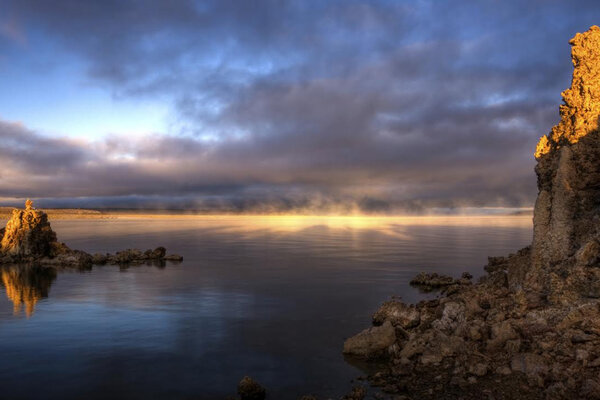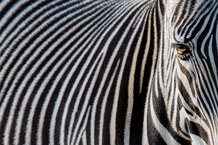Here is an article on the topic, ironically coming from the Christian Science Monitor:
A recipe for the perfect, life-yielding, primordial soup has
eluded science for decades. But a team of biochemists say they now have a
key ingredient.
Charles Carter and Richard Wolfenden, both of the
University of North Carolina, have uncovered new evidence of
abiogenesis, the process by which life arises from non-living chemical
matter. Their study, published Thursday in the Journal of Biological
Chemistry, suggests that a single ancient gene
may have used each of its opposite DNA strands to code for different
chemical catalysts. Those separate catalysts would have both activated
amino acids, which then formed proteins – essential to the production of
living cells.
Where does life come from? Despite years of
research, scientists still rack their brains over this most existential
question. If the universe did begin with a rapid expansion, per the Big
Bang theory, then life as we know it sprung from nonliving matter. How
this process, known as abiogenesis, could have occurred is a source of
much scientific debate.
In the early 20th century, the “primordial soup” model of
abiogenesis started to gain traction. It proposes that in Earth’s
prebiotic history, simple organic matter was exposed to energy in the
form of volcanoes and electrical storms. That energy would have
catalyzed chemical reactions that, in the span of a few hundred million
years, could have produced self-replicating molecules.
In 1952, Stanley Miller and Harold Urey
tested that hypothesis. They combined water, methane, ammonia, and
hydrogen in sealed vials in attempt to replicate Earth’s original
atmosphere. They bombarded the vials with heat and continuous electrode
sparks to simulate volcanic activity and lightening. Eventually, the
reaction produced a number of amino acids – the building blocks of
proteins and, by extension, life itself.
Today, the Miller-Urey
experiment is contested for a number of reasons, including the
possibility that Earth’s original atmosphere may have had a different
composition. Still, the production of organic compounds from inorganic
“precursors” laid a strong foundation for the primordial soup
hypothesis. And new findings support that hypothesis, Dr. Carter says.
“Our
work furnishes a likely explanation for how nature overcame one of the
main obstacles in turning the building blocks, demonstrated by Miller,
into genetic coding and inheritance,” Carter explains.
The
obstacle Carter refers to is the fact that certain chemical reactions,
essential to spontaneous protein assembly, occur very slowly. Unless
they are sped up and regulated, the prospect of life becomes all but
impossible. In modern living cells, that reaction is catalyzed by
enzymes called aminoacyl-tRNA synthetases. These complex molecules
belong to two separate families, or classes. Class I synthetases
activate 10 of the 20 amino acids that form proteins. Class II
synthetases activate the other 10.
In their experiments, Carter
and colleagues took modern synthetases and stripped away all but their
essential and universal components. They found that the remaining
structure, which they call “Urzymes,” were actually functional. These
Urzymes probably resemble the ancestral molecules which eventually gave
way to life, Carter says.
“We discovered Urzymes within the
elaborate modern aminoacyl-tRNA synthetases by ignoring all the bells
and whistles created by evolution,” Carter says. “We showed that what
was left was fully capable of translating the code.”
According to
Carter, the genetic code itself is strangely organized. One coding
strand forms the outer surface of the protein, while the other forms the
core. In other words, the two strands rely on “inside-out”
interpretations of the same genetic information.
“We devised a way
to show experimentally that the two families are related to each other,
despite all evidence to the contrary,” Carter says. “Our experiment
shows that the ancestral Class II protozyme was built from exactly the
same blueprint as the ancestral Class I protozyme, only the blueprint
behaved as if it were written on glass and interpreted from the opposite
side. The stunning thing is that both interpretations work equally well
in the test tube.”
In other words, nature solved the protein
production problem by evolving a single gene to do two separate jobs.
And while Carter and Dr. Wolfenden’s study leaves many questions
unanswered, it does provide a “new set of tools” with which to move
forward. Carter says his work could inform new experiments to “fill the
gaps” in prebiotic chemistry.
Existential implications aside,
there is another motivation for answering the abiogenesis question. If
we fully understand which materials and conditions are necessary to the
production of life, we can narrow our search for life elsewhere in the
cosmos. In other words, a primordial soup recipe could revolutionize the
study of astrobiology.
Carter, however, isn’t as interested in his work’s extraterrestrial applications.
“I
myself am an inveterate ‘terrestrial chauvinist,’” Carter says. “I
believe that life as we know it involves so many enchanting coincidences
that it is both unique and inevitable, given appropriate environments.
My point of view is probably an outlier, but it is based on my life
trying to understand what makes biochemistry tick and discovering just
how well-suited so many of nature’s choices really are.”


